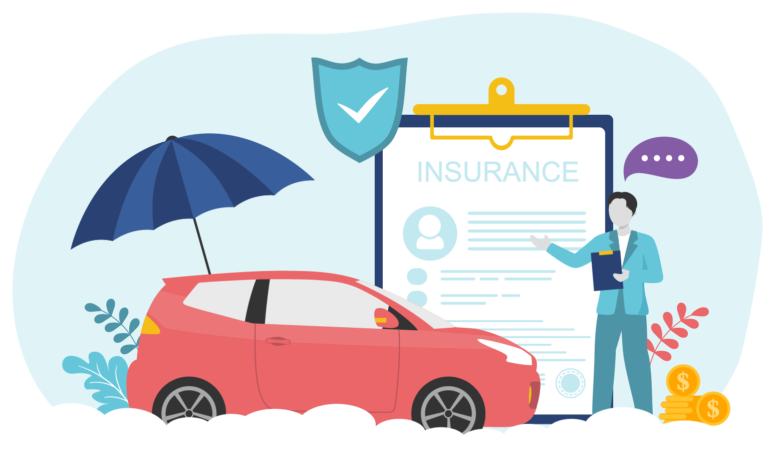What You Need to Know Before Buying Car Insurance

Buying car insurance is an essential part of being a responsible driver. Not only is it required by law in most places, but it also protects you financially in the event of an accident, theft, or damage to your vehicle. However, with so many types of coverage and options available, it can be difficult to know where to start. In this guide, we’ll break down everything you need to know before purchasing car insurance, so you can make an informed decision and ensure that you get the right coverage at the best price.
1. Understand the Types of Car Insurance Coverage
Car insurance isn’t one-size-fits-all. There are several types of coverage, and it’s important to know what each one offers to decide which is right for you.
- Liability Coverage: This is the most basic type of car insurance and is required by law in most states. It covers damages or injuries you cause to others in an accident. Liability insurance is divided into two parts:
- Bodily Injury Liability: Covers medical expenses and lost wages for people injured in an accident you caused.
- Property Damage Liability: Pays for damages to other people’s property, such as their vehicle or fence.
- Collision Coverage: Covers damage to your own car when it collides with another car or object, regardless of who is at fault.
- Comprehensive Coverage: This type of insurance protects against damage caused by non-collision incidents like theft, vandalism, fire, or natural disasters.
- Uninsured/Underinsured Motorist Coverage: This protects you if you’re in an accident with someone who doesn’t have enough insurance (or any at all) to cover your damages or injuries.
- Personal Injury Protection (PIP): This provides coverage for medical expenses for you and your passengers, regardless of who was at fault.
2. State Minimum Requirements vs. Full Coverage
While liability insurance is required by law in most places, each state has different minimum requirements. It’s essential to understand your state’s specific requirements for car insurance, as they set the minimum amount of coverage you must have to legally drive.
However, the minimum required insurance might not provide enough coverage if you’re involved in a major accident. This is why many drivers opt for “full coverage,” which includes collision, comprehensive, and additional types of insurance beyond the state minimums. Full coverage is especially recommended for drivers with newer or more expensive vehicles.
3. Factors That Affect Your Car Insurance Premium
Your premium is the amount you pay regularly for your car insurance. Several factors influence how much you’ll pay, including:
- Your Driving Record: A clean driving history with no accidents or tickets will typically lower your premium. On the other hand, a history of speeding tickets or accidents may result in higher rates.
- The Type of Vehicle: Expensive cars or those with high repair costs often have higher premiums. Additionally, sports cars and luxury vehicles may come with higher insurance rates due to their increased risk of theft or accidents.
- Your Age and Gender: Younger drivers, especially teenagers, typically face higher insurance premiums because they are considered higher-risk drivers. Gender can also play a role, as statistics show men tend to be involved in more accidents than women, although this varies by age group.
- Your Location: Car insurance rates vary depending on where you live. Urban areas tend to have higher rates due to the increased likelihood of accidents, theft, and vandalism. Rural areas may have lower premiums, but other factors like weather conditions may come into play.
- Your Deductible: The deductible is the amount you pay out-of-pocket before your insurance kicks in. Choosing a higher deductible can lower your premium, but it means you’ll pay more if you need to make a claim.
- Your Credit Score: Many insurers use credit scores to assess the likelihood of filing claims. A higher credit score can result in a lower premium, as it indicates a lower financial risk.
4. Compare Insurance Quotes
When shopping for car insurance, it’s important to get multiple quotes from different insurers to ensure you’re getting the best deal. Insurance premiums can vary widely from one company to another, even for the same coverage.
Use online tools to compare quotes and be sure to provide accurate information to get a precise estimate. Don’t forget to factor in the coverage limits, deductibles, and any additional policies when comparing prices.
5. Review the Insurer’s Reputation
The price of car insurance is important, but it’s equally important to choose a reliable and reputable insurance company. Look for an insurer with a strong customer service record and a history of handling claims efficiently. You can check reviews, ratings from agencies like J.D. Power or A.M. Best, and customer feedback to assess an insurer’s reputation.
Check the insurer’s claims process as well. Some companies may offer more streamlined or user-friendly claims services than others, which can be crucial when you need to file a claim after an accident.
6. Look for Discounts
Many car insurance companies offer discounts that can help lower your premium. Here are some common discounts to look for:
- Safe Driver Discount: If you have a clean driving record, you may qualify for a discount.
- Multi-Policy Discount: Bundling your car insurance with other policies, like home or renters insurance, can often lead to savings.
- Good Student Discount: Some insurers offer discounts to students who maintain a good grade point average.
- Low-Mileage Discount: If you don’t drive much, you may qualify for a discount based on your low annual mileage.
- Anti-Theft Device Discount: Cars equipped with anti-theft devices like alarms or tracking systems may qualify for discounts.
Be sure to ask your insurance provider about all available discounts to ensure you’re getting the best rate possible.
7. Consider the Level of Customer Support
Accidents can be stressful, and having a car insurance provider with excellent customer service can make a big difference when you’re trying to navigate the claims process. Before purchasing, research how easy it is to get in touch with the insurer and how quickly they respond to claims. Some insurers offer 24/7 customer support, while others may have limited hours.
8. Read the Fine Print
Before finalizing your car insurance policy, it’s essential to carefully read the terms and conditions. This includes understanding your coverage limits, exclusions, and any restrictions. Make sure you’re clear on what is and isn’t covered, and don’t hesitate to ask your agent for clarification.
Conclusion
Choosing the right car insurance is an important decision that requires careful consideration of your needs, budget, and the types of coverage available. By understanding the basics of car insurance, comparing quotes, and evaluating the reputation of the insurer, you can ensure that you’re making an informed decision. Take your time to find the right balance between cost and coverage to protect yourself, your passengers, and your vehicle in the event of an accident.




